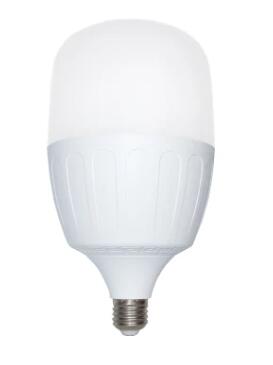Illuminating the Future: How LED Bulbs Shine Brighter than Traditional Bulbs
2023-12-05
Introduction:
The world of lighting has undergone a revolutionary transformation with the advent of LED (Light Emitting Diode) technology. As an energy-efficient alternative to traditional incandescent bulbs, LED bulbs have become the beacon of modern illumination. In this blog post, we'll delve into the fascinating realm of light generation, comparing how LED bulbs produce light in contrast to their traditional counterparts.
1. Incandescent Bulbs:
- Filament-Based Light Generation:
- Incandescent bulbs operate on a principle dating back to Thomas Edison's era. A tungsten filament is housed within the bulb, and when an electric current passes through it, the filament heats up, emitting visible light.
- Inefficiency and Heat Generation:
- Incandescent bulbs are notorious for their inefficiency. A significant portion of the energy they consume is transformed into heat rather than visible light. This inefficiency contributes to higher energy bills and a shorter lifespan for the bulbs.
2. LED Bulbs:
- Semiconductor Magic:
- LED bulbs employ an entirely different mechanism for light generation. The core of an LED bulb is a semiconductor chip, typically made of materials like gallium, arsenic, and phosphor. When an electrical current is applied to the semiconductor, electrons combine with electron holes, releasing energy in the form of photons—this process is known as electroluminescence.
- Energy Efficiency:
- LED bulbs are renowned for their exceptional energy efficiency. They convert a higher percentage of electrical energy into visible light, minimizing energy waste. This efficiency not only lowers electricity costs but also contributes to environmental sustainability.
3. The Role of Phosphor:
- Color Tuning with Phosphor:
- LEDs often incorporate phosphor to achieve a specific color of light. When the photons produced by the semiconductor strike the phosphor coating, they undergo a process called downconversion, transforming into visible light. The ability to control the composition of the phosphor allows for the production of light in various color temperatures.
4. Directional Light Emission:
- Focused Light Output:
- LED bulbs inherently emit light in a specific direction, unlike traditional bulbs that emit light in all directions. This directional output is advantageous for applications like task lighting, as it minimizes the need for reflectors or diffusers.
- Optimized Light Distribution:
- Reflectors and optics can be strategically designed with LEDs to optimize light distribution. This precision allows for customized lighting solutions, ensuring that light is directed precisely where it is needed.
5. Instantaneous Light and Dimming:
- Instant Illumination:
- LED bulbs provide instantaneous illumination, reaching full brightness the moment they are turned on. This is in stark contrast to certain traditional bulbs, such as compact fluorescents, which may require time to warm up and achieve maximum brightness.
- Dimmability:
- LED technology allows for seamless dimming without compromising the quality of light or impacting the lifespan of the bulb. This level of control over brightness is a valuable feature for creating ambiance and conserving energy.
Conclusion:
In the realm of light generation, LED bulbs stand as pioneers, ushering in an era of efficiency, versatility, and longevity. By harnessing semiconductor technology, LED bulbs have revolutionized the way we illuminate our spaces. Their ability to provide instant, directional, and energy-efficient light has elevated them as the preferred choice for both residential and commercial lighting solutions. As we bid farewell to the era of incandescents, LED bulbs continue to shine brightly, illuminating a future where sustainability and brilliance go hand in hand.



